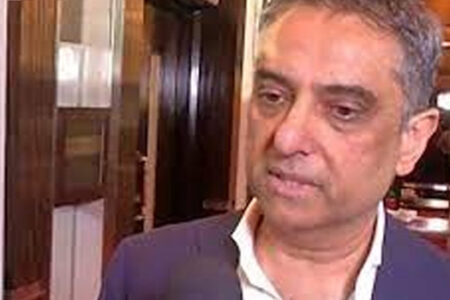Global central banks are currently divided into two camps. One believes that the phenomenon of rising inflation is transitory and it’s too early for a policy response to contain it; the other has started raising interest rates to bottle the inflation genie.
At the forefront is the Russian central bank. It has raised interest rates four times since March, including by a full percentage point in July. This is the trend in most emerging markets. Brazil has raised its policy rate thrice this year. Mexico, Hungary and the Czech Republic have also joined the bandwagon, while China was tightening its monetary policy till it cut the banks’ reserve requirement ratio mid-July, releasing about a trillion-yuan long-term liquidity, as the nation’s economic recovery started faltering.
Most developed nations, however, belong to the first camp. The Federal Open Market Committee meeting last week held the benchmark interest rate near zero. Since the US job market still had “some ground to cover”, Federal Reserve Chairman Jerome Powell stayed away from committing to the timing of the so-called tapering. Announcing that the Fed was nowhere near considering a rate hike, Powell insisted that higher inflation was a result of “transitory” factors and did not pose any imminent risk to the economy or the Federal Reserve’s policy stance.
Before that, in mid-July, the Bank of Japan announced its decision to hold steady on monetary policy while paring its GDP forecast. The European Central Bank, too, held its monetary policy steady in the second half of July but tweaked its guidance in sync with a raise in the inflation target. Most analysts believe that the Bank of England will also maintain the status quo when it announces its monetary policy on August 5, just a day ahead of the Reserve Bank of India’s (RBI) bimonthly policy review. They, too, don’t expect an early end to the bank’s quantitative easing programme.
What will the Indian central bank do this week? Nobody is expecting any action from the Monetary Policy Committee’s (MPC) three-day meeting between August 4 and 6. Even if it maintains the status quo, will the rate-setting body of the RBI prepare the market for a change in its accommodative stance over the next few months with the retail inflation breaching the upper limit of its target for two consecutive months – May and June? This, too, seems highly unlikely.
Like the US Fed, the RBI believes that the rise in inflation is transitory, driven primarily by supply disruptions. But unlike the US, where growth is secured, the second wave of the Covid pandemic is threatening to derail the growth momentum in Asia’s third largest economy. Last week, the International Monetary Fund cut India’s GDP growth estimate for financial year 2022 by three percentage points to 9.5 per cent from its April projection of 12.5 per cent.
In its June meeting, the MPC unanimously decided to continue with the accommodative stance for as long as necessary, leaving the policy rates unchanged. It also stuck to its data-based guidance as opposed to the time-based guidance it had been giving till February. It had said the accommodative stance would continue for long to revive and sustain growth on a durable basis, while ensuring that inflation remains within the target. I would expect this theme to continue.
In June, the Indian central bank cut its growth projection by one full percentage point to 9.5 per cent and raised inflation projection marginally to 5.1 per cent.
What has changed since?
The price of crude has remained in the same range after rising in early July. Despite higher inflation, the US 10-year yield has dropped from around 1.6 per cent to 1.25 per cent but in India, it has risen from around 6 per cent to 6.2 per cent.
Ahead of the last policy, India’s consumer price index-based retail inflation eased to 4.29 per cent in April from 5.52 per cent in March, primarily due to a fall in food prices. However, it rose to 6.3 per cent in May before dropping to 6.26 per cent in June, still higher than the upper end of the inflation target set by the MPC. The so-called core inflation, or non-food, non-oil inflation, too cooled off to 6.16 per cent in June.
Inflation is likely to move downwards from July till December, because of base effect, before climbing again in the last quarter of the current financial year, ending March 2022. The average inflation for the year could be around 5.5 per cent, higher than the RBI’s projection.
While keeping the rate unchanged, the RBI may raise its inflation projection marginally but refrain from any tinkering with its growth estimate for the time being. It is likely to continue with its secondary market government securities acquisition programme, or G-SAP, which it had started in April. The size of G-SAP 1.0 in the first quarter was Rs1 trillion. It was raised to Rs1.2 trillion for G-SAP 2.0 in the second quarter.
There is a subtle change in this bond-buying programme. The central bank has started offering to buy illiquid bonds. This is probably to help banks book profits and create space for buying fresh government securities. The RBI’s tolerance for the rise in bond yield is also evident now. The fresh 10-year paper, issued at 6.1 per cent, is now trading at 6.2 per cent. Till about a month ago, the RBI was not comfortable with seeing the 10-year yield breaching 6 per cent.
While the central bank is reconciled to a higher bond yield, the G-SAP may not remain the only instrument to ensure a smooth sailing of the government’s borrowing programme this year.
The market borrowing so far has been about Rs 4.75 trillion, a little more than 40 per cent of the total borrowing plan for the entire year.
We may see the RBI using the so-called twists and conventional open market operations, or OMO, too. But I will not be surprised if it sticks to the current policy rate till December.
If the growth momentum picks up in the second half of the year, the earliest we may see the RBI changing its stance by raising the reverse repo rate is February – from 3.35 per cent to 3.75 per cent. For the time being, the focus remains firmly on growth.



